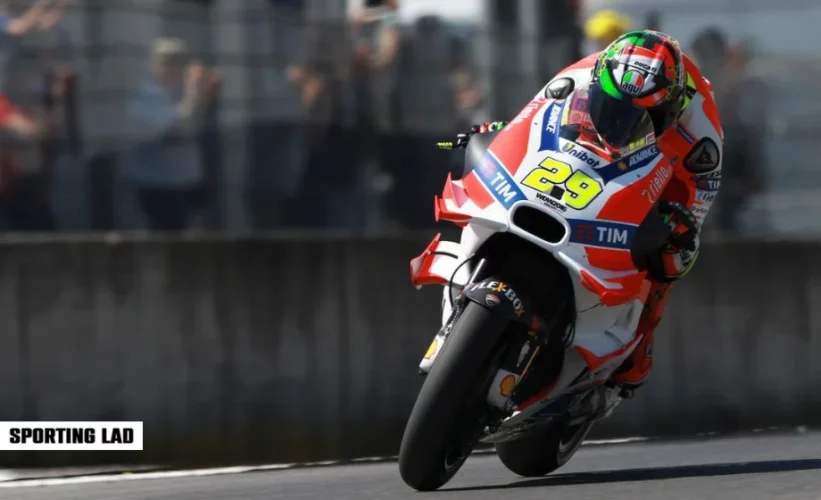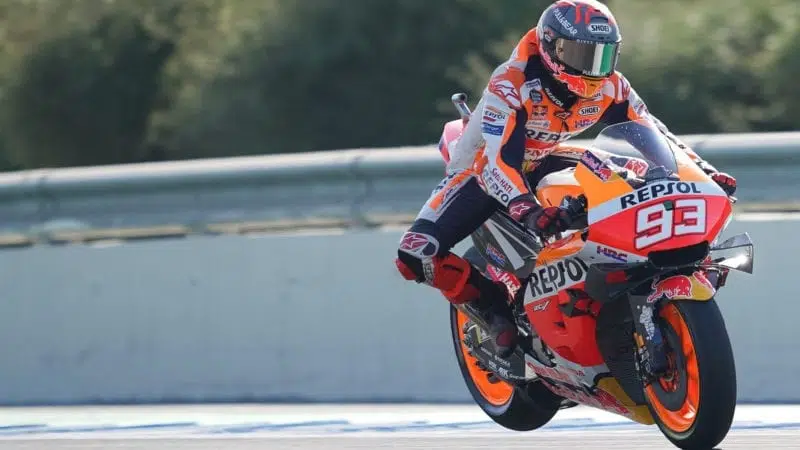In the fast-paced and exhilarating world of MotoGP racing, every aspect of a motorcycle’s performance plays a crucial role in determining the success of a rider. A crucial element that profoundly affects a MotoGP bike’s performance and handling is its weight. This in-depth article examines the MotoGP bikes’ weight requirements and their significant effects on race performance.
Understanding MotoGP Bike Weight
MotoGP bikes are painstakingly designed for the best possible performance on the racing course in terms of speed, agility, and maneuverability. One of the key considerations within the bike’s design became its weight. The burden of a MotoGP motorcycle is prompted by way of the chassis, engine, suspension, gasoline tank, exhaust device, and other electric additives.
The Importance of Weight Reduction
For top-of-the-line overall performance, a MotoGP motorcycle’s weight should be as little as is fairly possible. Overall performance on the tune can be extensively better through the following advantages of a lighter motorcycle.
1. Acceleration and Top Speed

The top velocity and acceleration of a bike are notably motivated by the aid of the strength-to-weight ratio. Engineers can increase the power-to-weight ratio of the bike by reducing its overall weight, which leads to faster acceleration off the line and better top speed on straightaways. Improving their total lap timings and facilitating overtaking maneuvers, gives riders a competitive edge.
2. Handling and Maneuverability
A MotoGP bike’s ability to address with no trouble and smoothly is notably impacted by weight loss. A lighter motorcycle is more nimble and responsive to rider inputs, permitting it to show directions rapidly and perform accurate turns. The bike’s capacity to lean into curves is improved, allowing riders to choose satisfactory racing traces and hopefully navigate tight turns.
3. Braking Performance
Weight loss improves braking performance on MotoGP motorcycles. A lighter motorcycle requires less braking force to slow down, allowing riders to brake later and carry higher corner entry speeds. This advantage can be critical in overtaking competitors or defending positions during intense race scenarios.
Striking the Balance: Motogp Bike Weight Distribution
Getting the appropriate weight distribution is equally as important as getting the overall weight of a MotoGP bike down. The amount of weight placed in the front and back of the motorcycle influences its stability, traction, and overall handling characteristics. A uniform weight distribution ensures:
1. Stability and Traction
The motorcycle can hold the track surface more firmly thanks to stability and traction which are both maintained by a balanced weight distribution. This guarantees that the bike maintains predictability and control even when traveling at high speeds or performing difficult maneuvers.
2. Cornering Performance

Proper weight distribution is instrumental in optimizing a bike’s cornering performance. It enables the front and rear tires to work harmoniously, providing optimal grip during corner entry, mid-corner, and corner exit. This allows riders to maintain higher cornering speeds and execute precise lines through turns.
Advanced Materials and Innovative Solutions
The MotoGP racing scene consistently tests the limits of engineering and technology. Manufacturers and teams create their bikes using cutting-edge materials and creative construction techniques in an effort to reduce weight:
1. Carbon Fiber and Lightweight Alloys
Carbon fiber, renowned for its remarkable strength-to-weight ratio, is extensively used in constructing various components of MotoGP bikes. It’s exceptional rigidity and lightweight nature contribute to significant weight reduction without compromising structural integrity. Furthermore, lightweight alloys such as titanium and magnesium are strategically incorporated in critical areas to further optimize weight reduction and enhance overall performance.
2. Optimization through Computational Fluid Dynamics (CFD)
MotoGP teams leverage advanced Computational Fluid Dynamics (CFD) simulations to optimize the design of their motorcycles. By precisely analyzing and modifying the airflow around the bike, engineers can minimize aerodynamic drag and reduce overall weight. This meticulous approach leads to improved efficiency and performance, enabling riders to achieve higher speeds and enhanced stability on the race track.
Conclusion
The weight specifications of a MotoGP bike have a profound impact on its overall performance in the fiercely competitive world of MotoGP racing. By meticulously managing weight reduction and ensuring optimal weight distribution, manufacturers and teams strive to create motorcycles that offer unparalleled acceleration, handling, and braking capabilities. Every gram shed and every aspect of weight balance meticulously engineered contributes to gaining a competitive advantage on the race track.
As the pursuit of MotoGP excellence continues, the relentless focus on weight specifications and their impact on performance remains at the forefront. The intricate interplay between weight reduction, weight distribution, and the innovative use of materials and technology creates a synergy that propels riders toward victory.
Suggested Read: QB Jimmy Garoppolo reportedly had foot surgery after signing with Raiders, could still start Week 1




